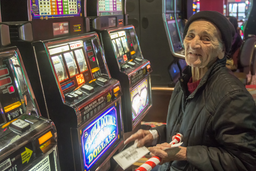Faith Healing with Homeopathy
The half billion people worldwide using homeopathic remedies are playing a dangerous game
Terry J. Allen
For the half billion people worldwide who use homeopathic remedies, the potions can be as healing as a hug, as benignly nutty as knocking wood for luck or as dangerous as believing a dashboard Jesus will protect you from an onrushing train. What homeopathy is not, however, is medicine that is scientifically proven to work better than a placebo. Independent researchers have debunked almost every favorable study they have examined and a $1 million prize for proving homeopathy’s efficacy remains unclaimed.
Some homeopaths counter that their cures are not amenable to scientific proof. That’s fine, if you want to call the multimillion dollar industry what it is: faith healing.
The U.S. homeopathic industry would have made my cousin proud. As a kid, he bottled his bath water and sold it to his schoolmates as a magic potion. Unlike this enterprising little charlatan (who went on to work for the Nixon administration – you can’t make this stuff up), most homeopaths claiming imaginary powers for ordinary water actually believe in their products. Some are licensed physicians, others simply hang up a shingle. But consciously fraudulent or not, the homeopathy industry is marketing magic; selling placebos wrapped in ritual, tied with a bright bow of superstition.
Homeopathy rests on three unproven$tenets: First, “Like treats like.” Because arsenic causes shortness of breath, for example, homeopaths prescribe its “spirit” to treat diseases such as asthma. Second, the arsenic or other active ingredient is diluted in water and then that dilution is diluted again and so on, dozens of times, guaranteeing – for better and worse – that even if the dose has no therapeutic value, it does no harm. And third, the potion is shaken vigorously so that it retains a “memory” of the allegedly curative ingredient, a spirit-like essence that revives the body’s “vital force.”
“A shocking fact,” writes homeopathic practitioner Bill Gray, “is that the more the remedy is shaken and diluted (serially), the more powerful the curative action! This remains true even beyond the point of there being even one molecule left in the solution!”
Scientific evidence for the memory? None. Rigorous, replicable double-blind studies documenting cure rates higher than placebo? Few to none.
So what about the fact that some homeopathic patients get better? Part of the effect comes from the ritual of consultation with a practitioner who treats the patient like a person rather than a body part on an assembly line. And just taking anything can help; the placebo effect is real. In gold-standard, double-blind studies, placebos presented as possible cures sometimes rival pharmaceuticals for effectiveness, or beat taking nothing at all.
Nor are the effects simply psychological. When volunteers took a placebo that they were told contained painkillers, they experienced relief, while researchers watching PET scans of the subjects’ brains tracked increased levels of the body’s own pain-relieving endorphins. In other studies, research subjects given placebos instead of antidepressants also showed chemical changes in their brains. FDA data for six top antidepressants showed that 80 percent of their effect was duplicated in placebo control groups.
Which brings us to the patient’s dilemma: Have faith in 19th century magic or rely on a pharmaceutical industry that suppresses negative outcomes (including death), promotes drugs for nonexistent diseases, repackages old drugs in new bottles to circumvent patent expirations, bribes doctors with perks and cash and hires ghost writers to author favorable studies? Given the hype, toxicity, and expense of many drugs and Big Pharma’s snake-oil tactics, the side effects of water (laced with “memory”) start looking pretty damn good. If your condition is relatively minor, self-limiting or untreatable, you may be a lot better off drinking homeopathy’s Kool-Aid-less Kool-Aid.
But if you have strep, a broken bone or a tumor, or if you need immunization from infectious disease, reliance on a homeopathic placebo may kill you.
British newspapers recently reported that homeopathic clinics and pharmacies offered unproven products to prevent malaria and other diseases including typhoid, dengue fever and yellow fever. Travelers who thought they were protected ignored warnings to use mosquito netting; some contracted malaria. And during the height of the smallpox-terror scare in 2003, U.S. doctor Bill Gray tried to market a homeopathic “shield” for smallpox. One reason the FDA stopped him was that its “Homeopathic Pharmacopoeia” does not recognize the “shield’s” supposed ingredient – Variolinum, purportedly extracted from “a ripened pustule of small pox.” It bothers the witless FDA not a whit that Gray’s water actually contained no Variolinium.
In general, the FDA turns a blind eye to homeopathy’s dangers and nonsense. Homeopathic remedies “are the only category of spurious products legally marketable as drugs,” according to Stephen Barrett, M.D., and Varro E. Tyler, Ph.D., authors of The Honest Herbal. “If the FDA required homeopathic remedies to be proven effective in order to remain marketable – the standard it applies to other categories of drugs – homeopathy would face extinction in the United States.”









